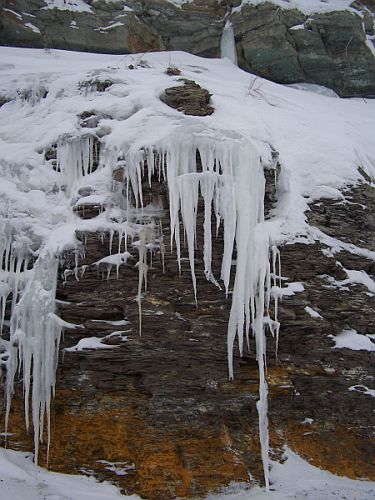Colours at the foot of the klint

The klint shows more colour variations in winter than in summer – everything around is white; as in the Antarctic the ordinary dull brown rock enlivens the uniform snow landscape, and so the Pakri klint seems colourful just in winter.
The reddish-orange colour in the lower part of the photo looks like a fragile lichen from a distance, on touching it sticks to the fingers.
Geologist Tõnis Saadre explains that these "lichens” are formed by iron hydroxides and are widely found in the lower parts of the escarpment, because the iron-rich groundwater and melt water have covered the strata with a precipitate film.
On studying the rock layers more closely, here and there bright yellow colour occurs, from sulphur compounds. The sulphur compounds have been washed out from (principally) the dolomite layers and the pyritic rock stratum.
There are also red-orange stripes in the limestone layers (upper part of photo): these too originate from iron compounds.
Greenish hues in the limestone can be seen in the glauconite chalk strata.








